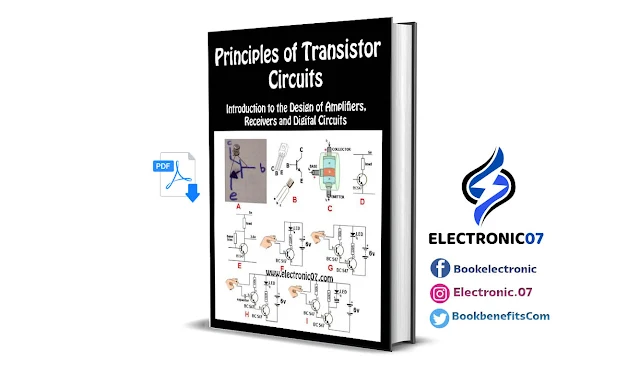"Principles of Transistor Circuits: Introduction to the Design of Amplifiers, Receivers and Digital Circuits"
Introduction:
In the rapidly evolving sphere of electronics, the need for a comprehensive textbook addressing the design of transistors, amplifiers, receivers, oscillators, generators, and integer circuits is more pertinent than ever. The forthcoming edition of this textbook aims to bridge the knowledge gap and offer insights into the advancements made since the survive edition in 1981. During this period, integrated circuits have turned ubiquitous, and miniaturization has reached unprecedented levels, helping up to half a million components on a single silicon chip.
Evolution of organic Circuits:
The proliferation of integrated circuits has revolutionized electronic devices, especially in applications with wireless and television receivers and video recording recorders, where most functions are now executed by these compact, multifunctional chips. The efficiency and space-saving advantages of integrated circuits have transformed the landscape of physical science design, marking a significant departure from the separate transistor-dominated landscape of the past.
Role of Discrete Transistors:
Despite the widespread use of structured circuits, there remains a crucial role for separate transistors, particularly in scenarios demanding considerable power yield for high-voltage operation. Devices like color television receivers and video recorders from the late 1980s and on the far side still incorporate discrete transistors, showcasing their enduring significance. Additionally, distinct transistors witness utility in experimental work and the early stages of electronic equipment design, emphasizing their continuing relevance.
Principles of Transistor Circuits, Seventh Edition discusses the fundamental concepts of transistor circuits. The book is comprised of 16 chapters that cover amplifiers, oscillators, and generators. Chapter 1 discusses semiconductors and conjunction nodes, while Chapter 2 covers the staple principles of transistors. The future chapters focus on amplifiers, where one of the chapters discusses bias and D.C. The book also negotiation about sinusoidal oscillators and covers modulators, demodulators, mixers, and receivers. Chapters 13 and 14 discuss pulse generators and sawtooth generators, respectively. The surviving two chapters divvy up with whole number of circuits and promote applications of transistors and other semiconductor devices. The book will be of outstanding use to professionals whose work requires a good understanding of the properties of transistor circuits.
In light of these technological shifts, there persists a requirement for updated information on the application of transistors in electronic circuits. This forthcoming edition of the schoolbook is specifically crafted to touch this demand, providing comprehensive coverage of transistor-based designs. Whether for professionals seeking to stay informed of contemporary electronic design practices or students engaging in inquiry work, this textbook is poised to serve as an invaluable imagination in understanding the principles and applications of transistors in modern natural philosophy circuits.
To ensure the book remains current, several changes and additions have been incorporated in this new edition. The use of germanium is now limited to specific types of diodes, resulting in the removal of information on germanium transistors, except for historical purposes in Appendix A. The chapter on digital techniques has been expanded to include insights into the circuitry used in digital stores. Information on switch-mode operation has been added to the power suppliers section. Various adjustments have been made to eliminate outdated information and enhance the clarity of the text.
Table of Contents: Principles of Transistor Circuits, Seventh Edition
1. Semiconductors and Conduction Nodes
- 1.1 Introduction to Semiconductors
- 1.2 Characteristics of Conduction Nodes
2. Principles of Transistors
- 2.1 Basics of Transistor Operation
- 2.2 Transistor Types and Properties
3. Amplifiers: Introduction and Fundamentals
- 3.1 Amplifiers Overview
- 3.2 Fundamentals of Amplification
4. Bias and D.C. Operation
- 4.1 Understanding Biasing in Transistor Circuits
- 4.2 Direct Current (D.C.) Operation
5. Amplifier Configurations
- 5.1 Common Emitter, Base, and Collector Configurations
- 5.2 Other Amplifier Configurations
6. Multistage and Integrated Amplifiers
- 6.1 Building Multistage Amplifiers
- 6.2 Integrated Amplifiers
7. Sinusoidal Oscillators
- 7.1 Introduction to Oscillators
- 7.2 Design and Operation of Sinusoidal Oscillators
8. Modulators and Demodulators
- 8.1 Modulation Principles
- 8.2 Demodulation Techniques
9. Mixers and Receivers
- 9.1 Mixer Circuits
- 9.2 Receiver Designs
10. Transistor Switching Circuits
- 10.1 Basics of Transistor Switching
- 10.2 Applications in Digital Circuits
11. Pulse Generators
- 11.1 Design and Operation of Pulse Generators
- 11.2 Pulse Waveforms and Applications
12. Sawtooth Generators
- 12.1 Sawtooth Waveform Generation
- 12.2 Applications of Sawtooth Generators
13. Digital Circuits and Applications
- 13.1 Overview of Digital Circuits
- 13.2 Applications of Transistors in Digital Systems
14. Whole Number of Circuits
- 14.1 Integer-Based Circuit Designs
- 14.2 Applications and Advancements
15. Prominent Applications of Transistors
- 15.1 Specific Applications in Various Industries
- 15.2 Recent Developments and Trends
16. Conclusion: Summary and Future Trends
- 16.1 Recapitulation of Key Concepts
- 16.2 Anticipated Future Trends in Transistor Circuits
Information Of The Book:
Title: Principles of Transistor Circuits: Introduction to the Design of Amplifiers, Receivers and Digital Circuits pdf
Language: English.
Size: 7 MB
Pages: 354
Year : 1990
Format: PDF

